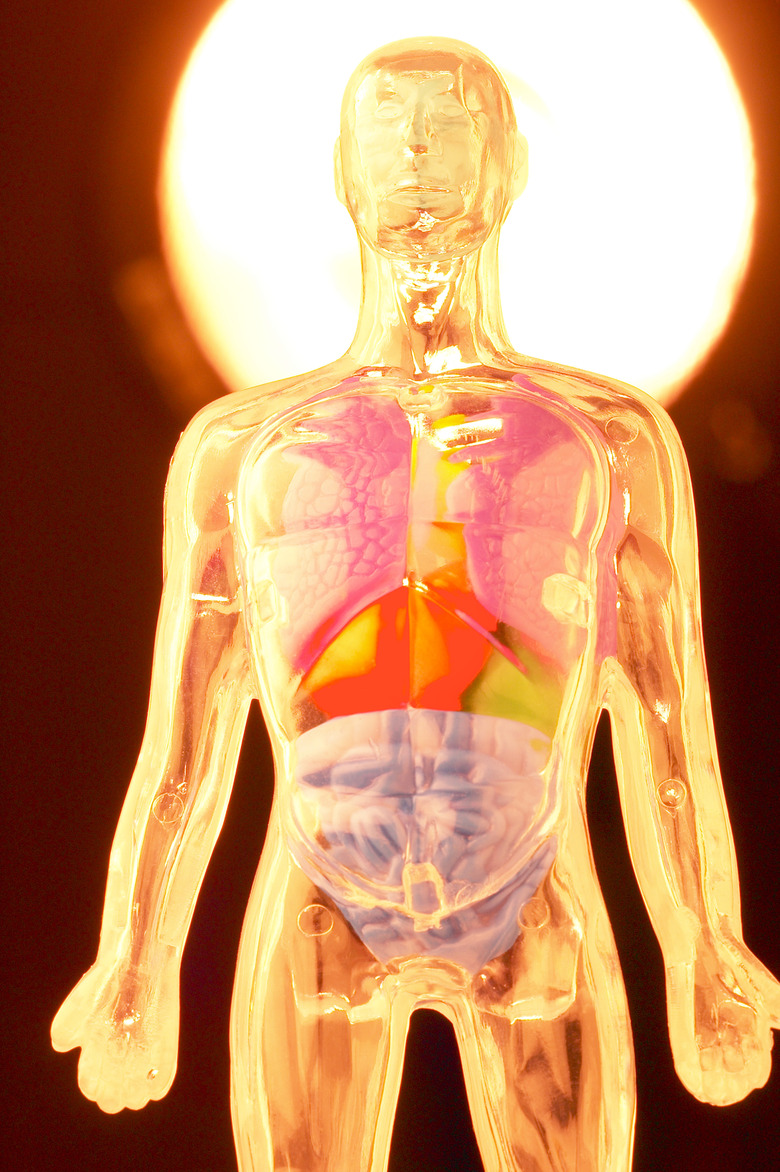How Do The Liver & Kidney Communicate & What Hormones Are Used?
The kidneys and the liver work together to remove toxic waste substances from the body. The products of waste breakdown travel from the kidneys to the liver via the circulatory system. However, aside from this primary duty, these organs also have roles in generally maintaining conditions and regulating functions throughout the body. They perform these roles thanks to communication through hormones and other chemicals secreted into the bloodstream.
Waste Removal
Waste Removal
The liver is essential to both the breakdown and the storage of energy-rich molecules. It can decompose amino acids to release energy, or it can store amino acids as lipids or carbohydrates for later use. In both processes, the liver produces toxic ammonia that it converts to a compound called urea. Urea moves through the blood to the kidneys, which turn it into the urine we excrete, making this path between kidneys and liver crucial to human functioning. A hormone called anti-diuretic hormone, or ADH, will tell the kidneys to conserve water and lower urine output if the body is dehydrated.
Water and Sodium Balance
Water and Sodium Balance
Sometimes, however, the liver and kidneys work together to coordinate other activities through chemical messages. Blood pressure, for example, depends on the concentrations of water and sodium in the blood. When the kidney detects a decrease in blood flow, it sends an enzyme called renin to the liver. Renin helps the liver produce a substance that eventually travels to the adrenal glands. There it becomes a hormone called aldosterone that makes the kidneys retain sodium and water.
Production of Blood Sugar
Production of Blood Sugar
In the case of blood sugar, a hormone stimulates the liver as well as the kidneys. The sugar that fuels many of the body's processes exists as glucose. The liver stores excess glucose and also synthesizes new glucose if the body's supply is low. Researchers have determined that the kidneys can synthesize glucose as well. The kidneys and the liver are stimulated to do this by low levels of the hormone insulin.
Calcium Absorption and Use
Calcium Absorption and Use
The kidneys and liver can make hormones that stimulate other organs. When sunlight strikes the skin, the skin makes a chemical that the liver changes into a form of vitamin D. This vitamin D moves from the liver to the kidneys courtesy of the bloodstream. In the kidneys it becomes a hormone called calcitriol. Calcitriol helps the small intestine absorb calcium from food and also encourages bones to release calcium for other body processes.
References
- Netdoctor: Liver, Kidney and Urinary System Facts
- Fundamentals of Anatomy and Physiology, Sixth Edition; Frederic H. Martini
- United State National Library of Medicine: How Does the Liver Work?
- Faqs.org: The Urinary System—Workings: How the Urinary System Functions
- Virginia Commonwealth University: Hormones That Act on the Kidneys
- Mayo Clinic: Hypoglycemia
Cite This Article
MLA
Johnson, Sheila. "How Do The Liver & Kidney Communicate & What Hormones Are Used?" sciencing.com, https://www.sciencing.com/liver-kidney-communicate-hormones-used-15260/. 24 April 2017.
APA
Johnson, Sheila. (2017, April 24). How Do The Liver & Kidney Communicate & What Hormones Are Used?. sciencing.com. Retrieved from https://www.sciencing.com/liver-kidney-communicate-hormones-used-15260/
Chicago
Johnson, Sheila. How Do The Liver & Kidney Communicate & What Hormones Are Used? last modified March 24, 2022. https://www.sciencing.com/liver-kidney-communicate-hormones-used-15260/
